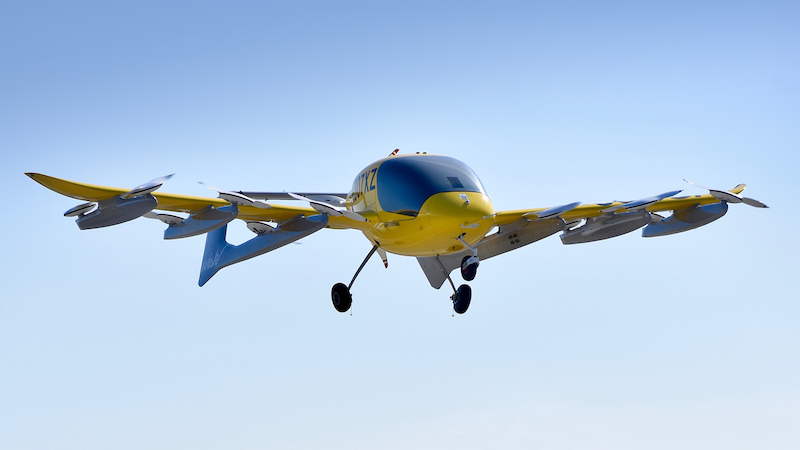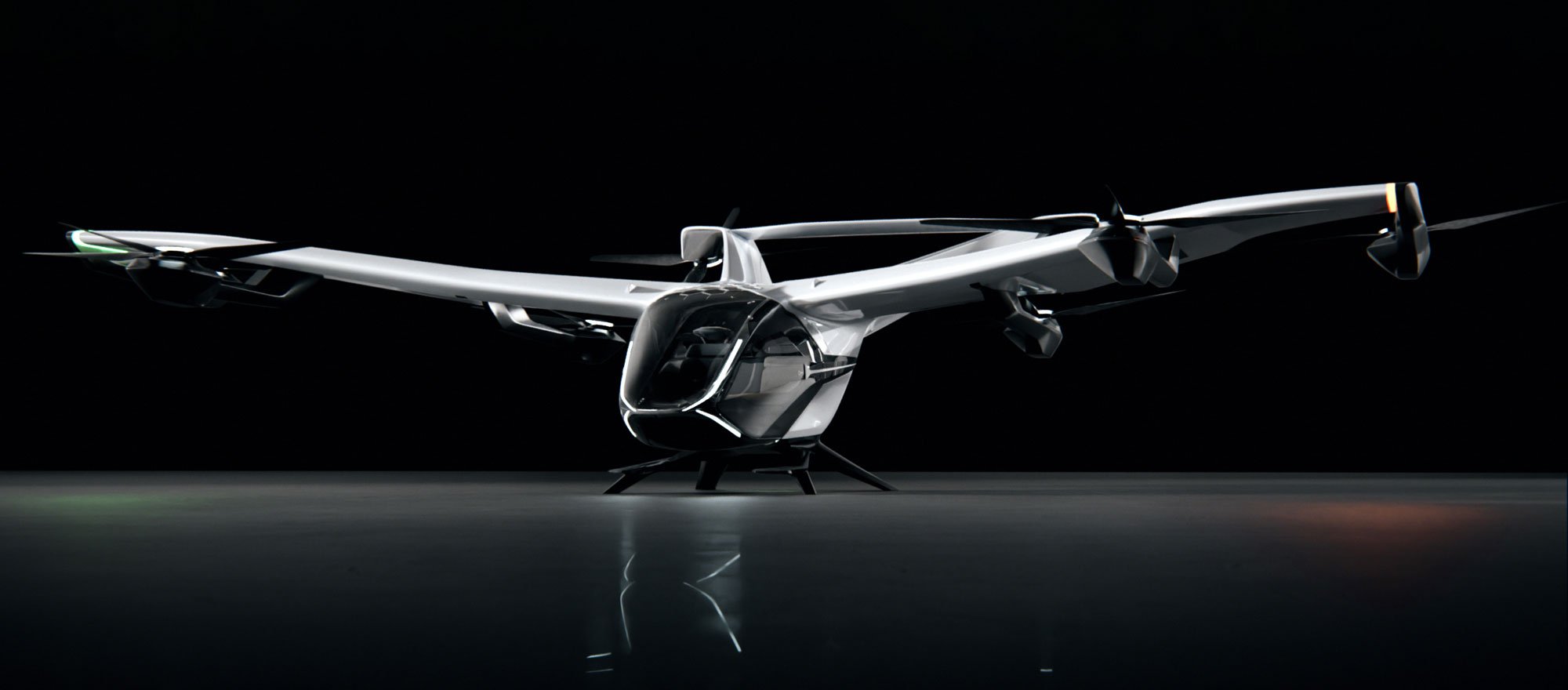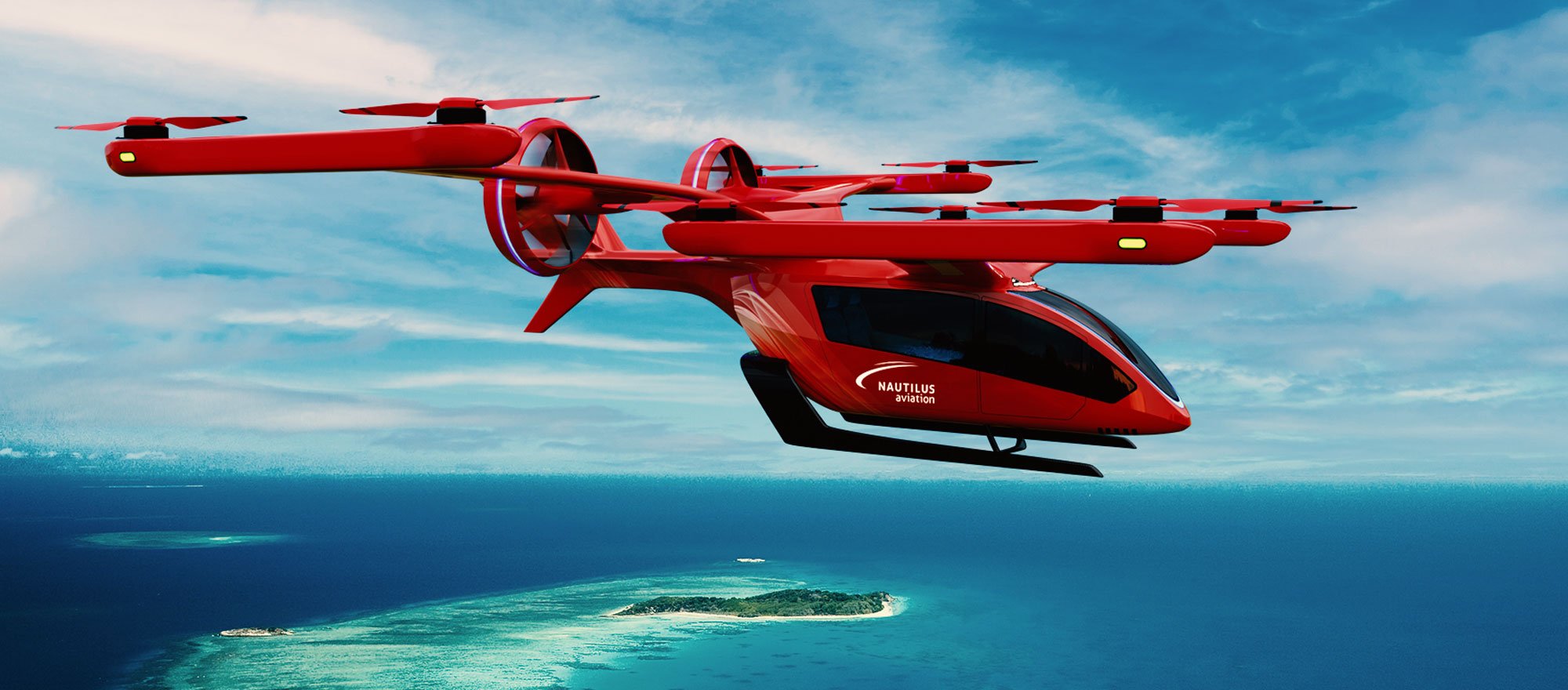Click Here to View This Page on Production Frontend
Click Here to Export Node Content
Click Here to View Printer-Friendly Version (Raw Backend)
Note: front-end display has links to styled print versions.
Content Node ID: 406350
Developers of new electric aircraft say they are poised to deliver a revolution in public transportation using eVTOL vehicles to operate air taxi services in and around cities, as well as for cargo deliveries and emergency medical missions. Over the past two years, while the Covid pandemic has squeezed the mainstream aviation industry, the so-called advanced air mobility (AAM) sector has attracted large-scale investment to support its lofty ambitions to begin commercial operations from 2024.
The Asia-Pacific region appears well placed to become the epicenter of the new air transport business model, with Singapore widely viewed as a likely early adopter. Cities in countries such as China, South Korea, Japan, and Australia have all engaged in work with eVTOL aircraft manufacturers and companies looking to provide AAM services and infrastructure.
Since around 2016, a seemingly endless succession of start-ups has scrambled to bring to market an assortment of new electric vertical takeoff and landing (eVTOL) and short takeoff and landing (eSTOL) aircraft. Over and above their innovative distributed electric propulsion technology, some AAM pioneers aspire to achieve autonomous flight with no pilot on board for both passenger and cargo transformation, although the regulatory path to such operations seems lengthy and complex to navigate. Typically, the eVTOL models in the works promise a range of between just 20 miles and up to around 150 miles, while the fixed-wing eSTOL aircraft would serve so-called sub-regional routes of up to around 400 miles.
Several major aerospace groups have inserted themselves into the crowded AAM market. In September 2021, Airbus unveiled plans for a fixed-wing eVTOL aircraft called the CityAirbus NextGen, for which it aims to complete type certification in 2025.
On January 24, Boeing announced a $495 million investment in its Wisk Aero eVTOL aircraft joint venture with Kitty Hawk, which was founded by Google co-founder Larry Page and vice president Sebastian Thrun. The California-based start-up is working on what it describes as a sixth-generation, fully autonomous design but declined to provide any specifications or performance details.

Wisk says it intends to be the operator for pilotless air taxi services that could launch in 20 cities with around 2,000 of its vehicles operating as many as 14 million 10- to 25-minute flights in the first year. However, the privately-funded company has yet to publish any timeline for certification and service entry, saying it cannot predict how long it will take to get approval for autonomous operations.
Airliner and business jet manufacturer Embraer has channeled its AAM ambitions through its Eve Urban Air Mobility subsidiary, which emerged from the Brazilian airframer’s EmbraerX technology incubator. In December, the company announced that Eve will merge with Zanite Acquisition Corp and then seek a listing on the New York Stock Exchange before the end of the second quarter of this year. It is working on a four-passenger aircraft that it expects to enter service in 2025.

Just over two years ago, in October 2019, another Singapore Airshow exhibitor—Volocopter—gave locals a sneak preview of what eVTOL air taxi services could look like when it conducted flight demonstrations with its technology demonstrator aircraft during a travel industry trade show in the Marina Bay district. The German manufacturer has continued to cooperate over planning with Singapore’s Economic Development Board and the Civil Aviation Authority.
Ground infrastructure and drone operations group Skyports is one of several companies preparing plans for vertiports to support eVTOL flights in Singapore and other locations worldwide. According to Yun-yuan Tay, the UK-based company’s head of the Asia-Pacific region, a much wider potential for AAM exists in this part of the world.
“Asia-Pacific is a very diverse region and in addition to the more developed countries like Japan, South Korea and Singapore, other countries such as Thailand, Indonesia, India, and the Philippines really need this too [because] they have serious congestion and pollution [from road traffic],” he told AIN. “We believe there is great demand in cities such as Bangkok, Manila, and New Delhi, but that’s not where it will start. It will begin in places where governments have taken the lead to have a roadmap, with a coordinated city planning effort. And unfortunately, [eVTOL air taxi service] will begin at a price point where only a certain segment can afford it.”
Skyports sees early AAM adopters like Singapore, Japan, and Australia as providing a blueprint for rolling out operations elsewhere, in part because their aviation safety agencies are well regarded. “This is a very new industry and no one can really predict the future, and we’ll need to learn from the initial flights, allowing the system to change over time,” he said.
Volocopter is working to certify its two-seat VoloCity eVTOL. Initially, that vehicle will operate with just one passenger onboard and a pilot, over distances of up to around 22 miles, but eventually, plans call for autonomous flights with no pilot on board. The company also has begun developing a larger, longer-range model called the VoloConnect, which could fly four passengers just over 60 miles.
The company has already completed a feasibility study with Southeast Asian services app Grab and has conducted market surveys with prospective end users. Hon Lung Chu, head of Singapore operations and business development for the region, said shoring up public acceptance for eVTOL flights remains a priority.
Volocopter intends to launch services with sightseeing flights over the island state that could lead to on-demand air taxi flights within Singapore and, potentially, to neighboring Malaysia and Indonesia.

In July 2021, Volocopter announced a partnership with Malaysia Airports to develop vertiports. Work underway with Skyports centers on a feasibility study for a site at Subang International Airport near Kuala Lumpur.
More recently, the manufacturer conducted flight trials in South Korea at Gimpo and Incheon airports near the capital Seoul. It hopes to align its plans with those of the country’s Ministry of Land, Infrastructure and Transport, which is supporting concepts for airport-to-city-center connections from 2025. Volocopter already has signed a memorandum of understanding with Korean rideshare app Kakao.
South Korean automotive group Hyundai is one of several international carmakers signaling their intention to enter the AAM sector. It has established an AAM division, called Supernal, that is now working on an eVTOL design.
Japan also appears convinced of AAM’s potential, and at least two Japanese start-ups have begun working on plans for single-seat eVTOL vehicles. Officials in the country seem to be working toward a 2025 start date for commercial services, beginning with flights organized around the World Expo to be held in the Osaka-Kansai region that year.
In October, Japan Airlines said it intends to lease or purchase up to 100 of the four-passenger VX-4 eVTOL aircraft under development by UK-based Vertical Aerospace via the leasing group Avolon. The flag carrier also has committed to taking 100 of the VoloCity aircraft and is working with Volocopter to plan an operational launch. Separately, Japanese trading group Marubeni last September placed “pre-order options” for another 200 VX-4s, deliveries of which Vertical plans to start in 2025.
Given China’s exponential urban expansion over the past decade or so, the country appears likely to serve as a strong AAM incubator. Eager to encourage the development of eVTOL technology, the Civil Aviation Administration of China has given local company EHang a strong home-field advantage in its plans to bring its entirely autonomous, two-seat EH216 vehicle to market along with the larger VT-30 model.
EHang has conducted extensive public flight trials, including some passenger-carrying flights in several Chinese cities, but also in international locations including Indonesia and Estonia. The company has reported large numbers of early sales with a network of customers or partners (some of which appear to be distributors). It intends to accelerate service entry plans through an initiative called 100 Air Mobility Routes, which now includes the deployment of 5G communications technology to support flight trials in the city of Guangzhou.
Volocopter also maintains connections in China through one of its investors, the automotive group Geely, which has its own eVTOL subsidiary called Aerofugia. Last year, the companies announced plans for a joint venture called Volocopter Chengdu, which would participate in the manufacture and support operation of the VoloCity aircraft in China with a provisional order for 150 units.
FutureFlight.aero has a dedicated news and information platform covering all aspects of the advanced air mobility sector, including a wide array of new aerospace technology and aviation business models. At the site, you can sign up to receive a free weekly newsletter each Thursday.